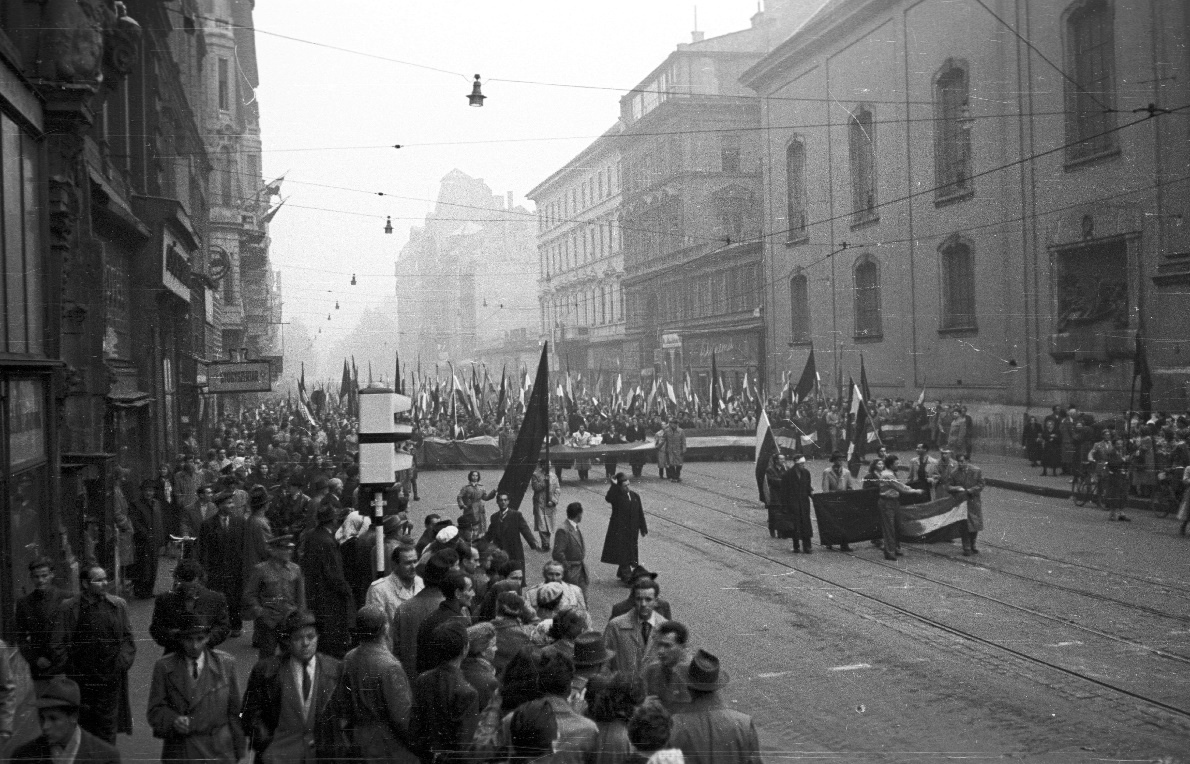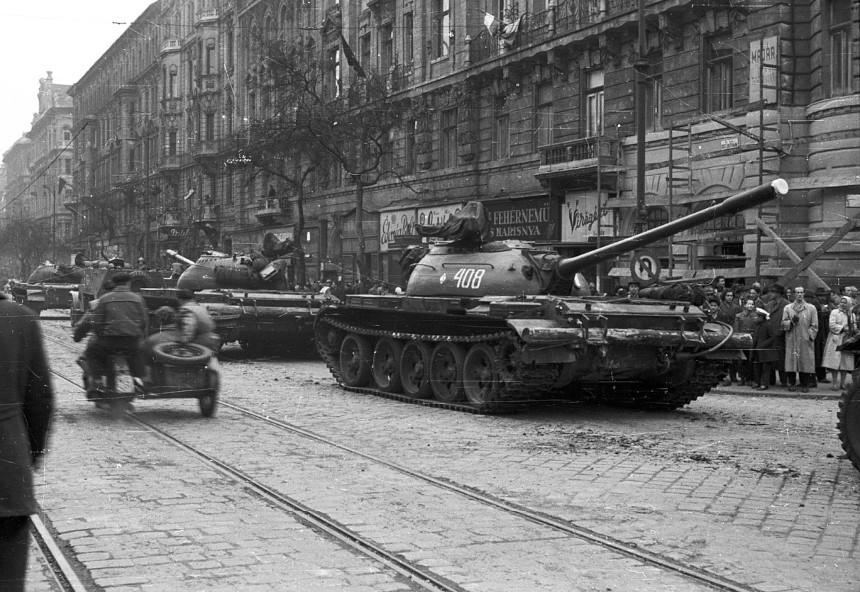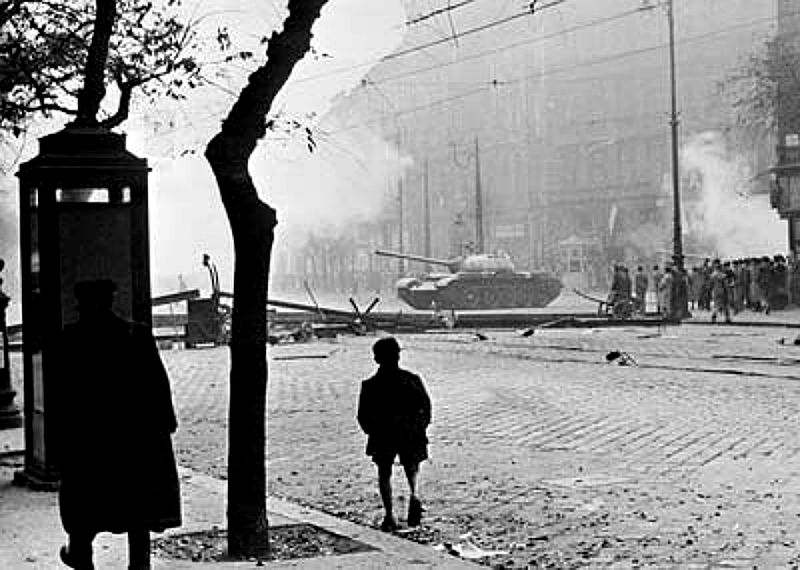When the Russians sent their troops into Ukraine on February 24, 2022, it seemed that nearly the entire world united against them. Even countries that had long maintained neutrality in global politics criticized Russia and pledged support for the Ukraine government.
Rather than responding to criticism directly, Russia found others to blame for its actions. The United States was first on the list.
The Putin government had long argued that America was exploiting division in Russia to “crush… the newly emerged Russian Federation.” In January, Putin defended Russia’s military buildup on Ukraine’s border, saying it needed to protect itself from an aggressive and hostile United States. The next month, he said the U.S. was using Ukraine as the means to contain Russia’s development. “It can be done in different ways,” he explained, “such as pulling us into some armed conflict and then forcing their allies in Europe to enact those harsh sanctions against us.”
After Russia assembled 120,000 armed forces on the Ukrainian border, the U.S. sent troops to reinforce its NATO allies from Estonia down to Bulgaria. Russia accused the United States of “igniting tensions on the European continent” with its threatening gestures “in the vicinity of our borders.”
The situation is reminiscent of events between October and November 1956, when Russia sent a military force into Hungary to overthrow the popular government.
A Satellite Breaks Out of Orbit
After World War II, Hungary became a satellite state of the Soviet Union, with leaders chosen by Josef Stalin. Under the new, repressive regime, Hungarians saw their standard of living fall and their security threatened by the state’s secret police.
Then, in 1952, Stalin died, and both he and his regime were roundly criticized by the subsequent Soviet leadership.
Hungarians believed the attacks on Stalinism heralded an era of reform and liberty. With this encouragement, students in Budapest demonstrated against the Russian domination of Hungary on October 23, 1956. Authorities seized several students and shot others. Hungarians quickly formed militia groups to detain communist authorities and overthrow the pro-Stalinist government. A new government arose to declare independence from Russia and promise free elections.

On November 4, the Russian army, backed by tanks, moved in and violently crushed the revolution at the cost of 2,500 Hungarians dead and 250,000 fled to shelter in foreign countries.

The Usual Suspect
And who was responsible for the brutality and bloodshed? Russia offered up its dependable enemy: Americans had organized and directed the recent Hungarian revolution.
In the March 16, 1957, issue of the Post, contributor Demaree Bess confronted Russia’s “evidence” of America’s involvement in an article called “Our Propaganda Warriors.”
Bess reported that government officials in Russia offered “proof” that American radio networks — Radio Free Europe and Voice of America — had masterminded the whole Hungarian uprising. The revolution, according to the Soviet regime, was conducted from the office of Radio Free Europe in Munich. There a staff of over 1200 employees — all specialists in organizing military units —broadcast continual instructions and orders to the Hungarians.
Bess argued that the Hungarian-speaking announcers on VOA and RFE wouldn’t have said anything openly hostile to Russia because they still had close relatives in the country, and their words could bring bloody reprisals to loved ones. And he quoted Ernest Pisko of the Christian Science Monitor, who had studied the station’s records and found no evidence that RFE had encouraged an uprising or promised outside help.
Only two questionable broadcasts were found. One announcement said if the Hungarians held out for a few more days, the U.S. government might have to review its policies. The other broadcast, in reporting that Russian tanks were shooting Hungarian civilians, quoted from a military manual about guerilla tactics against armored vehicles. Both messages were admittedly clear violations of the radio stations’ policies.
Bess’s inquiry not only exonerated RFE and VOA, but uncovered a Russian disinformation program. Both RFE and VOA did more than just broadcast news and American opinion. They also gathered radio broadcasts from Soviet sources during the uprising. They found, Bess writes, “Soviet transmitters announced themselves as RFE and encouraged Hungarian recklessness by faking assurances of outside armed assistance. By doing so, Kremlin operators sought simultaneously to justify harsh measures in Hungary and to smear American propaganda networks.”
In 2006, with the Soviet regime fallen and Hungary independent, A. Ross Johnson, a researcher at the Wilson Institute, looked back on the uprising and the role of Radio Free Europe. To the charge that RFE incited the revolution, Johnson wrote, “The assertion … is absurd; uprisings and revolutions have internal causes and dynamics and have never been sparked by external media.”
Having reviewed materials from RFE broadcasts of the time, he concluded they
were generally dispassionate and espoused gradual reform – not ‘liberation’ but what would later commonly be labeled ‘liberalization.’…No program advocated continued military resistance. Hungarian listeners may have drawn encouragement from RFE broadcasts both to keep fighting and to expect Western aid – but these were actions the programs themselves neither advocated nor promised.
Voice of America shortwave broadcasts are once again part of the resistance. While the parent agency for VOA and RFE currently broadcast into eastern Europe via other formats like TV and FM radio, many of these channels are being blocked by Russia. A crowdfunded campaign has found a Florida radio station — Miami Radio International — that will air VOA’s “Flashpoint Ukraine” program via shortwave radio. It may seem like throwback in an era of high-tech communication, but just as in 1956, allies have found a way provide a beleaguered nation with the free flow of information.
Featured image: A Soviet tank in Budapest, 1956 (CIA, Wikimedia Commons)
Become a Saturday Evening Post member and enjoy unlimited access. Subscribe now



